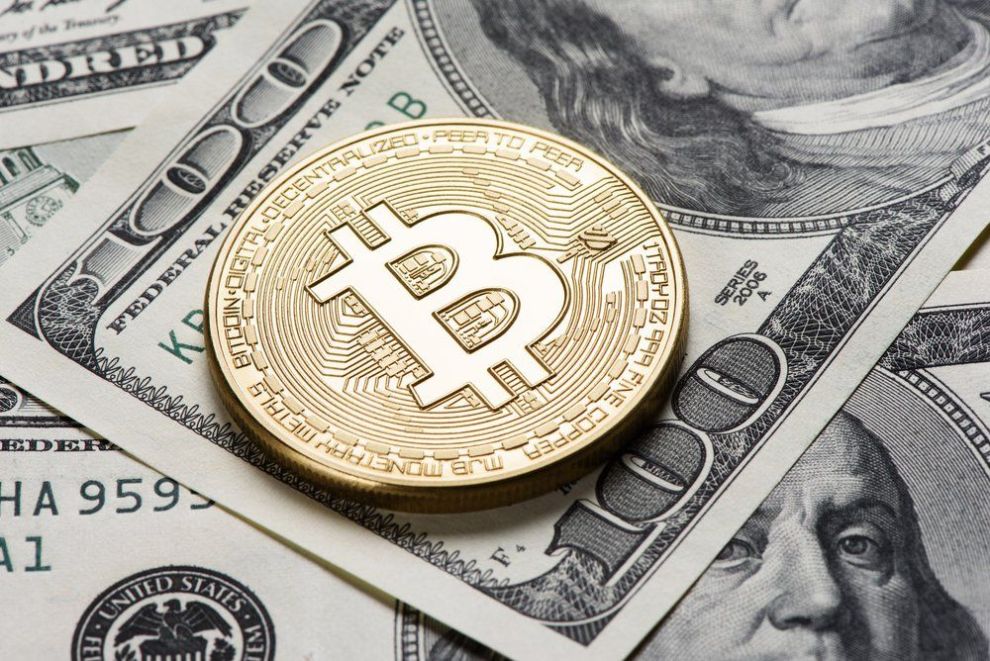Bitcoin has come a long way from its early days as a fringe experiment. It’s now a mainstream financial asset, held by major institutions and everyday investors alike. With its fixed supply, growing adoption, and increasing recognition as a store of value, many are asking: Is Bitcoin a smart investment today?

In this guide, we’ll break down the potential benefits, real risks, and practical strategies to help you decide if Bitcoin deserves a place in your portfolio.
What is Bitcoin, and how does it work?
Bitcoin is a decentralized digital currency that operates without a central authority or banks. It leverages peer-to-peer technology to enable instant payments. Bitcoin transactions are verified by network nodes through cryptography and recorded in a public distributed ledger called a blockchain.
A Quick Look at Bitcoin’s Origins
Bitcoin launched in 2009 under the name Satoshi Nakamoto—a pseudonym for a person or group that’s still anonymous. What began as a niche idea for digital money has evolved into a widely recognized asset, influencing the rise of thousands of cryptocurrencies and a global industry around blockchain.
What Blockchain Technology Actually Does
Blockchain is the backbone of Bitcoin. It’s a public, decentralized ledger that records every transaction. Instead of one central authority, thousands of independent computers (nodes) confirm and store the data, which makes the system tamper-resistant and transparent.
How Mining Keeps the Network Running
Mining is how Bitcoin stays secure and how new coins are created. Powerful computers compete to solve cryptographic puzzles, which verifies transactions and adds them to the blockchain. Miners get paid in Bitcoin, which gives them a reason to keep the system running.
Pros & Cons of Investing in Bitcoin
Bitcoin has earned its spot in the financial conversation—but it’s not without trade-offs. Here’s a side-by-side breakdown to help you weigh the upside and the risks.
Pros
- Strong historical returns – Bitcoin has outperformed most traditional assets over the past decade, with dramatic long-term gains for early investors.
- Fixed supply and halving cycles – Bitcoin is capped at 21 million coins. Every four years, the block reward is cut in half—a process known as halving—which slows the rate of new supply and may boost long-term value.
- Good portfolio diversifier – Bitcoin has a low correlation with stocks and bonds, making it a potential hedge against inflation or economic instability.
- Rising adoption across industries – More businesses, institutions, and payment platforms are embracing Bitcoin, helping support future demand.
- Supports ongoing financial innovation – Bitcoin’s ecosystem has spurred advancements like the Lightning Network, helping improve transaction speed and scalability.
Cons
- Uncertain regulatory future – Laws around Bitcoin are still evolving, and future government crackdowns or restrictions could impact accessibility and value.
- Security depends on the user – If you lose your private keys or store Bitcoin on an insecure platform, there’s no backup. Hacks and scams remain a risk.
- No built-in consumer protections – Unlike banks or brokerages, Bitcoin comes with no safety net. Mistakes or losses are usually permanent.
Tip: For better security, store your Bitcoin in a cold wallet—a physical device that keeps your private keys offline and out of reach from hackers.
How to Invest in Bitcoin Responsibly
Bitcoin can be part of a smart investment strategy—if you approach it with clear goals and risk management in mind. Here are a few ways to invest wisely.
Use a Dollar-Cost Averaging Approach
Rather than trying to time the market, invest a fixed amount at regular intervals. This strategy, known as dollar-cost averaging, helps smooth out short-term price swings and reduces the emotional highs and lows of buying Bitcoin.
Keep Your Portfolio Balanced
Don’t go all in. Even if you’re optimistic about Bitcoin’s future, it should only be one part of a broader portfolio. Include traditional assets like stocks, bonds, or real estate alongside digital assets to manage risk.
Stay Informed on Regulations and Market Trends
Bitcoin’s landscape changes fast—especially when it comes to regulation. Watch for new tax rules, government policies, and platform developments that could affect your investment. Following trusted sources will help you adapt as things evolve.
How Bitcoin Performs as a Long-Term Investment
Many investors treat Bitcoin like digital gold—something to hold for years, not just days or months. But does it actually make sense long term? Let’s look at what the data and trends suggest.
What History Tells Us
Since 2009, Bitcoin has delivered massive returns compared to traditional assets. Despite pullbacks, its price has trended upward over time, driven by limited supply, rising adoption, and growing institutional interest.
Bitcoin vs. Traditional Investments
Bitcoin doesn’t behave like stocks or bonds. While the stock market offers steady gains over time, Bitcoin has shown outsized returns on a longer horizon—often outpacing equities, gold, and bonds. That said, its behavior is still evolving, and its long-term role is less defined.
Institutional Interest Keeps Growing
More hedge funds, pension managers, and public companies are adding Bitcoin to their balance sheets or offering it through investment products. This trend helps legitimize Bitcoin and brings greater stability to the market.
Don’t Forget About Taxes
In the U.S., Bitcoin is taxed like property. You’ll pay capital gains tax if you sell at a profit, and even converting to another crypto can be a taxable event. Make sure to track your trades and talk to a tax advisor if you’re unsure how it applies to your situation.
How to Build a Bitcoin Investment Strategy
Investing in Bitcoin isn’t one-size-fits-all. The right strategy depends on your risk tolerance, goals, and time horizon. Here’s how to structure your approach.
Know Your Risk Tolerance
Before you invest, ask yourself how much risk you’re comfortable with. Bitcoin has big upside potential, but it’s still a speculative asset. Only invest what you can afford to lose, and avoid overexposing your portfolio.
Define Your Investment Goals
Are you looking for long-term growth? Portfolio diversification? A hedge against inflation? Clear goals will guide how much you invest, how long you hold, and how actively you manage your position.
Choose a Time Horizon
Your timeline affects your approach. Long-term holders may ride out volatility and focus on Bitcoin’s macro potential. Shorter-term traders may lean on price charts, market sentiment, and timing opportunities.
Bitcoin Investment Strategies to Consider
There’s no single best way to invest in Bitcoin. Each strategy has pros and trade-offs depending on your goals and experience level.
- Buy and hold – This passive strategy involves purchasing Bitcoin and holding it over the long term, based on belief in its future value. It’s simple, low-maintenance, and historically rewarding.
- Active trading – Active traders aim to profit from short-term price moves. This requires more market knowledge, technical analysis skills, and time.
- Arbitrage – Arbitrage traders capitalize on price differences across crypto exchanges. While it can be profitable, it’s complex, fast-moving, and usually not ideal for beginners.
Bitcoin’s Broader Impact on the Financial System
Bitcoin isn’t just another asset—it’s also reshaping how people think about money, banking, and global finance. Here are a few ways it could change the game.
Could Bitcoin Become a Global Alternative to Fiat?
With a capped supply, resistance to censorship, and decentralized structure, Bitcoin has traits that make it appealing as a global store of value. Some see it as “digital gold,” especially in countries with unstable currencies.
Expanding Access to Financial Services
Bitcoin allows people to send, receive, and store money without needing a traditional bank account. This can support financial access for those who are unbanked or underbanked—especially in developing countries.
Disrupting the Remittance Industry
Bitcoin can reduce the high fees and delays tied to international money transfers. For migrant workers and families who rely on cross-border payments, it offers a faster, cheaper alternative to banks or services like Western Union.
Final Thoughts
Bitcoin has delivered massive returns for early adopters—and it continues to attract investors who believe in its long-term potential. But it’s not without risk. The best approach is to stay informed, invest within your limits, and treat Bitcoin as part of a balanced strategy.
If you choose to invest, start with a clear plan, secure your holdings properly, and think in years, not days. Bitcoin may still be evolving, but it’s already changed the way the world thinks about money.
Frequently Asked Questions
How much do I need to invest in Bitcoin?
You can start with as little as a few dollars. Bitcoin is divisible, so you don’t need to buy a whole coin. Most platforms let you purchase as little as $5 to $10 worth, depending on their minimum requirements.
Is it better to buy Bitcoin on an exchange or through an investing app?
Most people buy Bitcoin through either a crypto exchange (like Coinbase or Kraken) or a trading app (like Robinhood or Swan Bitcoin). Exchanges offer more control and features, while apps may be easier for beginners but often limit what you can do with your Bitcoin. Choose based on your goals—especially if you plan to move your Bitcoin to a secure wallet.
How do I choose a secure Bitcoin wallet?
Look for a wallet with strong security features like two-factor authentication, encryption, and backup options. Cold wallets—like Ledger or Trezor—store your Bitcoin offline and are safer for long-term storage. Hot wallets (connected to the internet) offer more convenience but come with added risk.
What are the transaction fees associated with buying and selling Bitcoin?
Fees vary by platform and depend on the size of your trade and how fast you want it processed. Most exchanges charge anywhere from a few cents to a couple of dollars per transaction, with percentage-based fees often ranging between 0.1% and 2%.




